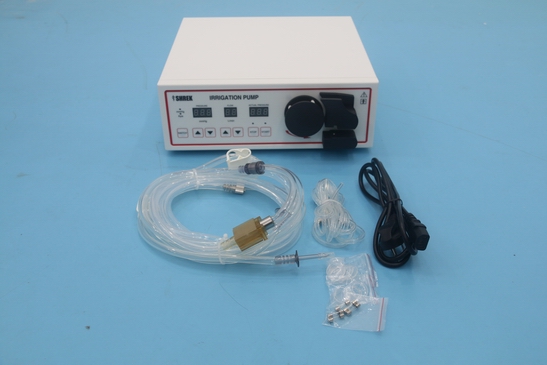Irrigation Tube Endoscopy: Enhancing the Accuracy of Diagnostic and Therapeutic Procedures
Endoscopy is a widely used diagnostic and therapeutic procedure that allows physicians to visualize and access internal organs and tissues through small incisions or natural openings. It has revolutionized the field of medicine, enabling the detection and treatment of various diseases and conditions with minimal invasiveness and reduced recovery time. However, one of the main challenges of endoscopy is the limited visualization caused by debris and bodily fluids that obstruct the lens, compromising the accuracy of the procedure. To overcome this challenge, the use of an irrigation tube endoscopy has emerged as a promising solution.

An irrigation tube endoscopy is a device that incorporates a water irrigation system to flush debris and fluids from the endoscope's lens, improving visualization during the procedure. The device consists of an endoscope with an attached water tube and a control unit that regulates the flow rate and pressure of the irrigation fluid. The water flows through the tube and is directed towards the lens, effectively clearing any debris or fluids that may obstruct the view.
The use of irrigation tube endoscopy has several advantages over traditional endoscopy procedures. Firstly, it enhances the visualization of the area being examined, improving the accuracy of the diagnosis and treatment. It also reduces the need for repeated cleaning of the lens during the procedure, saving time and improving efficiency. Additionally, the irrigation system can reduce the risk of complications, such as infections or bleeding, by clearing the area of debris and bacteria.
Irrigation tube endoscopy is widely used in various medical fields, including gastroenterology, urology, pulmonology, and gynecology. In gastroenterology, the device is used to visualize the digestive tract, detect abnormalities, and perform therapeutic procedures such as polypectomy and biopsy. In urology, it is used to examine the bladder, ureters, and kidneys, and treat conditions such as urinary tract infections and kidney stones. In pulmonology, it is used to examine the respiratory tract, detect lung cancer, and remove foreign objects. In gynecology, it is used to examine the reproductive system and perform procedures such as hysteroscopy and laparoscopy.
In conclusion, the use of irrigation tube endoscopy has revolutionized the field of endoscopy, enabling physicians to perform accurate and efficient diagnostic and therapeutic procedures with minimal invasiveness and reduced risk of complications. Its wide application in various medical fields has made it an essential tool for the diagnosis and treatment of numerous conditions. With ongoing advancements in technology, the irrigation tube endoscopy device is expected to continue to improve, further enhancing the accuracy and effectiveness of endoscopy procedures.



Leave a message